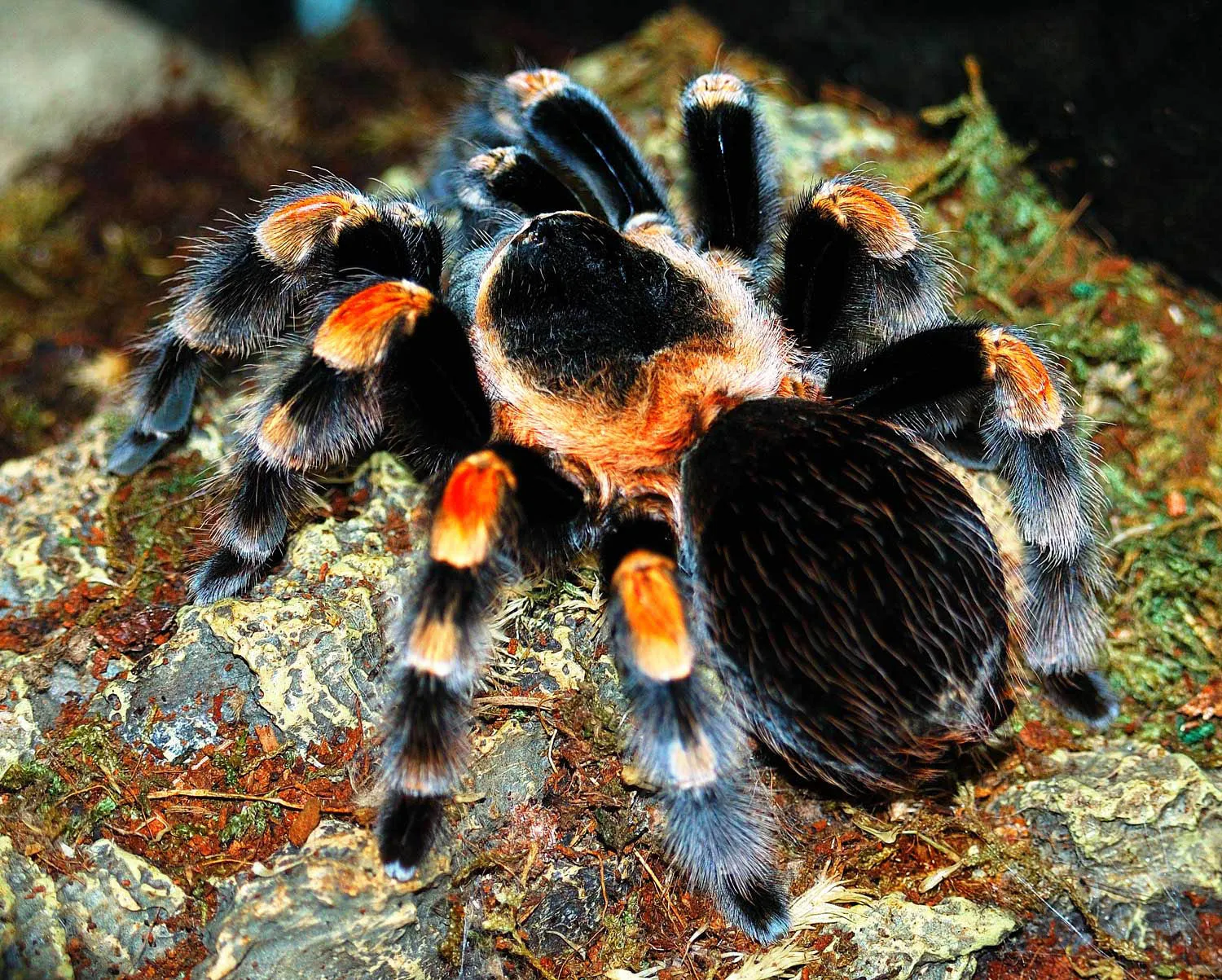Top 5 Facts About Male Mexican Red Knee Tarantulas
The Mexican Red Knee Tarantula (Brachypelma hamorii) is a popular pet due to its striking appearance and relatively docile temperament. However, there are significant differences between male and female tarantulas, and understanding these differences is crucial for proper care and appreciation of these fascinating creatures. This article delves into five key facts about male Mexican Red Knee Tarantulas, providing essential information for both novice and experienced keepers. From appearance and behavior to lifespan and care requirements, we’ll uncover the unique aspects of these captivating arachnids. Knowing these facts will not only enhance your understanding of male Mexican Red Knee Tarantulas but also help ensure you provide the best possible environment for your pet.
Fact 1: Appearance
One of the first things you’ll notice about a male Mexican Red Knee Tarantula is its appearance. While both males and females share the iconic red and black banding, there are subtle but noticeable differences. Males often appear slightly smaller and more slender than females. The overall coloration might also appear less vibrant in males, though this can vary depending on the individual. When examining a potential male, it’s important to also consider the presence of other sexual characteristics, such as the presence of hooks on the front legs (pedipalps), used for mating, and the shape of the abdomen.
Coloration and Size
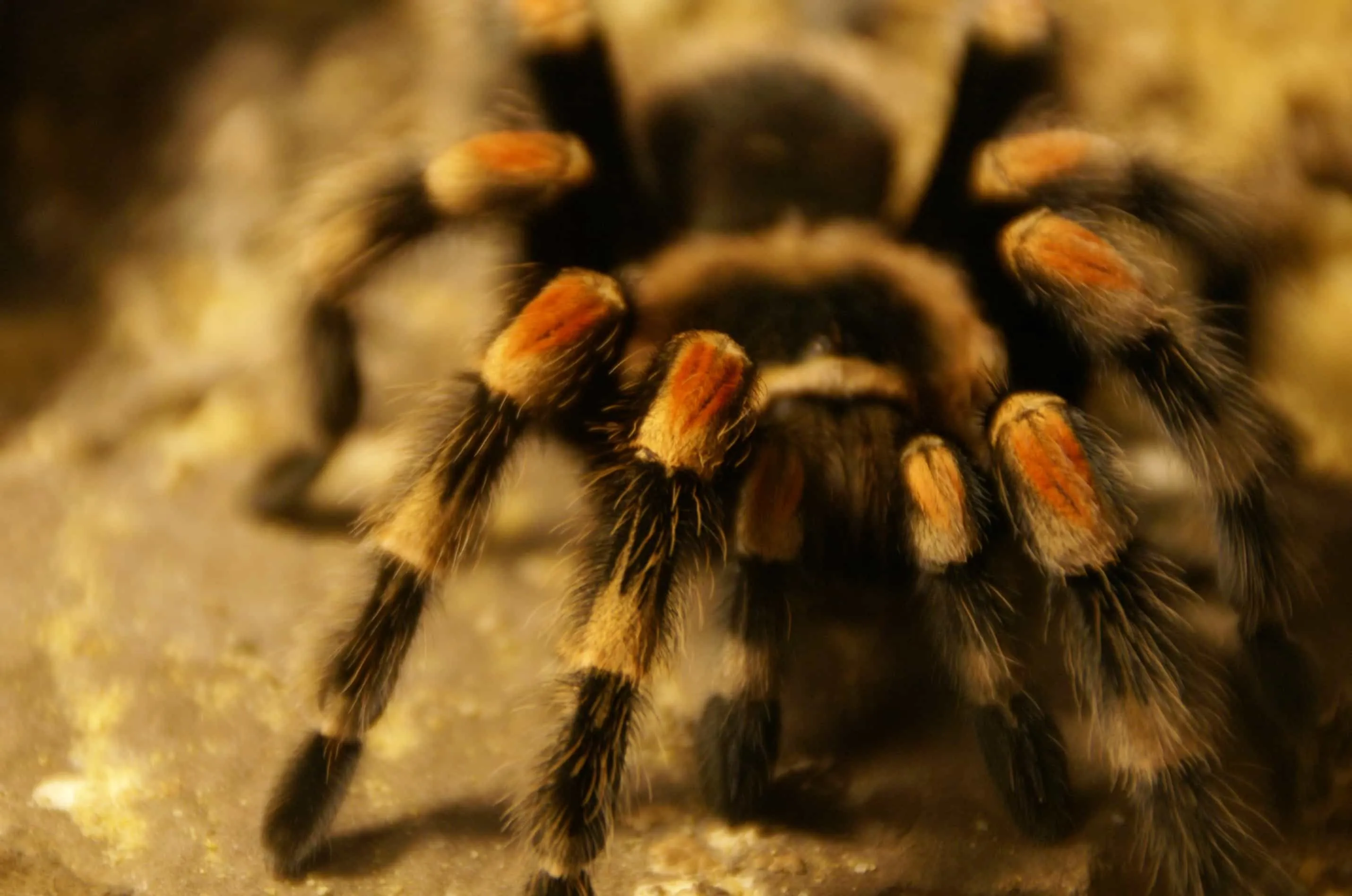
The size and coloration of a male Mexican Red Knee Tarantula are key indicators of its sex, although not always definitive on their own. Males tend to be slightly smaller, with a leg span generally less than that of females. Coloration, while similar, may show some variations. Males, in some cases, might exhibit less intense red banding. However, these differences can be subtle, and depend on the individual tarantula. The best way to confirm the sex is by looking for the presence of mating hooks and the shape of the pedipalps. Remember that a healthy, well-fed male can sometimes appear similar in size to a younger female, so consider all characteristics.
Fact 2: Molting and Growth
Molting is a crucial part of a tarantula’s life cycle, as it sheds its exoskeleton to grow. Male Mexican Red Knee Tarantulas molt less frequently than females. After reaching maturity, males typically molt only once or twice more in their lives. This is a significant difference, as females continue to molt regularly throughout their lives. The frequency of molting is a good indicator of growth rate and overall health. Understanding the molting process is essential for recognizing when your tarantula is preparing to molt, and for ensuring it has a safe and stress-free environment during this vulnerable time.
Understanding the Molting Process
The molting process is a fascinating and delicate procedure. A tarantula will typically stop eating a few weeks before molting. It will then create a silk mat, lie on its back, and the exoskeleton will split open. The tarantula then emerges, soft and vulnerable, with its new exoskeleton. It is crucial to leave the molt in the enclosure until the tarantula is fully hardened. During this time, the tarantula is extremely vulnerable and should not be disturbed. Providing the proper humidity levels will help facilitate a successful molt, and careful observation can help you identify any potential problems.
Growth Rate Differences
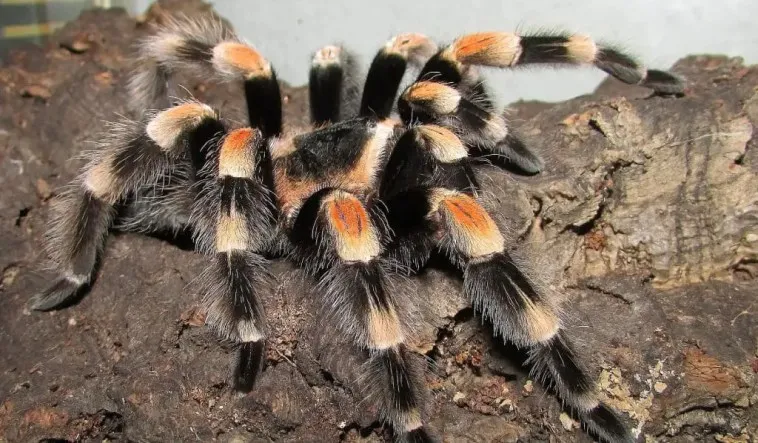
Male Mexican Red Knee Tarantulas generally mature faster than females. This accelerated growth is linked to their shorter lifespans. As males approach maturity, their molting frequency decreases significantly. In contrast, females will continue to molt regularly, allowing them to grow larger and live much longer. The faster growth rate in males means that they reach their adult size sooner, which can influence their care requirements and the overall experience of owning them. Monitoring growth and molting cycles helps ensure a healthy life for your tarantula.
Fact 3: Lifespan Differences
The lifespan of a male Mexican Red Knee Tarantula is significantly shorter than that of a female. This is a critical factor to consider when deciding to keep one as a pet. Males typically live for only a few years after reaching maturity. Their shorter lifespan is primarily due to the energy expended during mating and the overall biological processes related to reproduction. This shorter lifespan emphasizes the importance of providing the best possible care during their time. Being aware of this difference allows owners to adjust their expectations and enjoy every moment with their male tarantula.
Male Lifespan
Male Mexican Red Knee Tarantulas generally live for 2-5 years after reaching maturity. This is a stark contrast to the 10-25 years that females can live. The shorter lifespan is a natural part of their life cycle, driven by their reproductive role. After maturing, the male’s primary function is to mate, which takes a toll on its body. This means a male tarantula owner should be prepared for the limited time they will have with their pet. Proper care, including a suitable habitat, proper feeding, and maintaining adequate humidity, remains critical to maximize the lifespan of your male tarantula.
Fact 4: Behavior
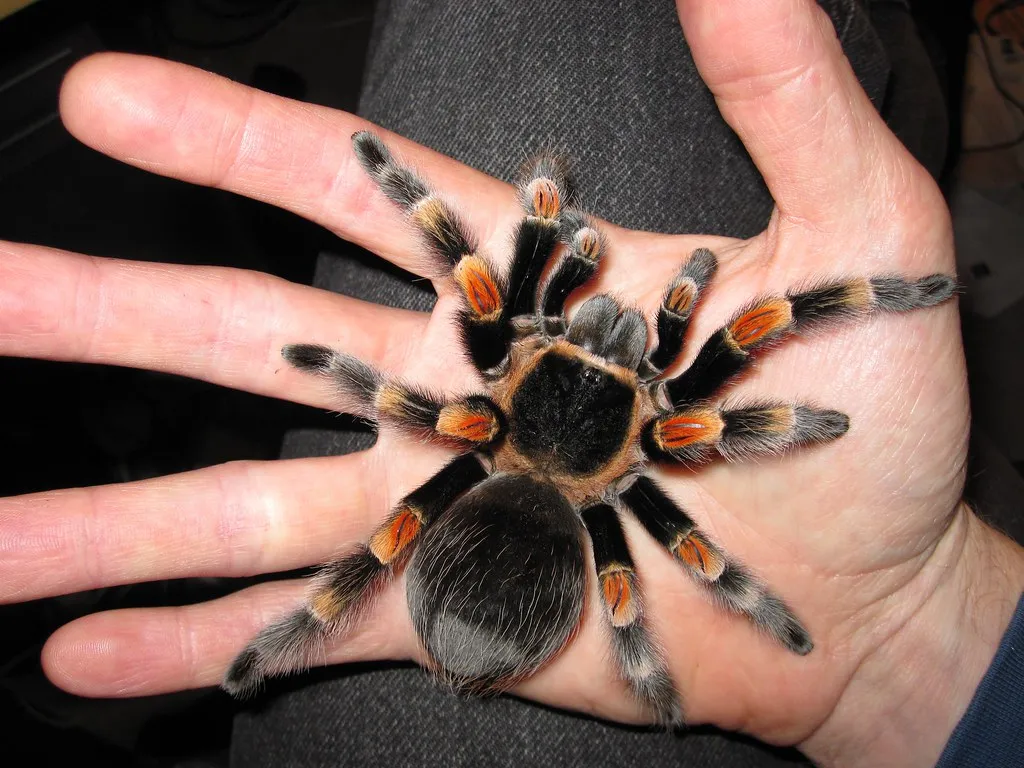
The behavior of male Mexican Red Knee Tarantulas changes significantly as they approach and reach maturity. Their primary focus shifts to reproduction. They will often become more active, particularly if a female tarantula is nearby. This increased activity is related to their search for a mate. They will also develop mating hooks on their pedipalps, which they use to hold the female’s fangs during mating. Understanding these behavioral changes will provide insights into the tarantula’s needs and the changes that can be expected at different stages of their life. These behavior patterns are critical in understanding a male tarantula’s overall health and well-being.
Maturity and Mating Behavior
Once a male Mexican Red Knee Tarantula reaches maturity, its behavior becomes largely centered around mating. The development of the mating hooks on the pedipalps is a clear sign of maturity. The male will then actively search for a mate. If a female is present, the male will often engage in a courtship ritual, drumming with his legs to attract her attention. Successful mating involves the male depositing sperm into a special web and transferring it to the female. After mating, the male’s lifespan is usually limited, as it has fulfilled its reproductive purpose. Observe the tarantula’s behavior to understand its needs during this period.
Fact 5: Care Requirements
While the basic care requirements for male Mexican Red Knee Tarantulas are similar to those of females, there are some key considerations. Their enclosure should be appropriately sized, with enough space for movement and exploration. The substrate should be appropriate for burrowing. Consistent monitoring of humidity and temperature levels is crucial. Male tarantulas are generally less demanding than females, and they may not require as much care, but attention to these details helps maintain their health. Keeping a close eye on their behaviors and adjusting the care as needed is important for their well-being, given their shorter lifespans.
Habitat and Enclosure Needs
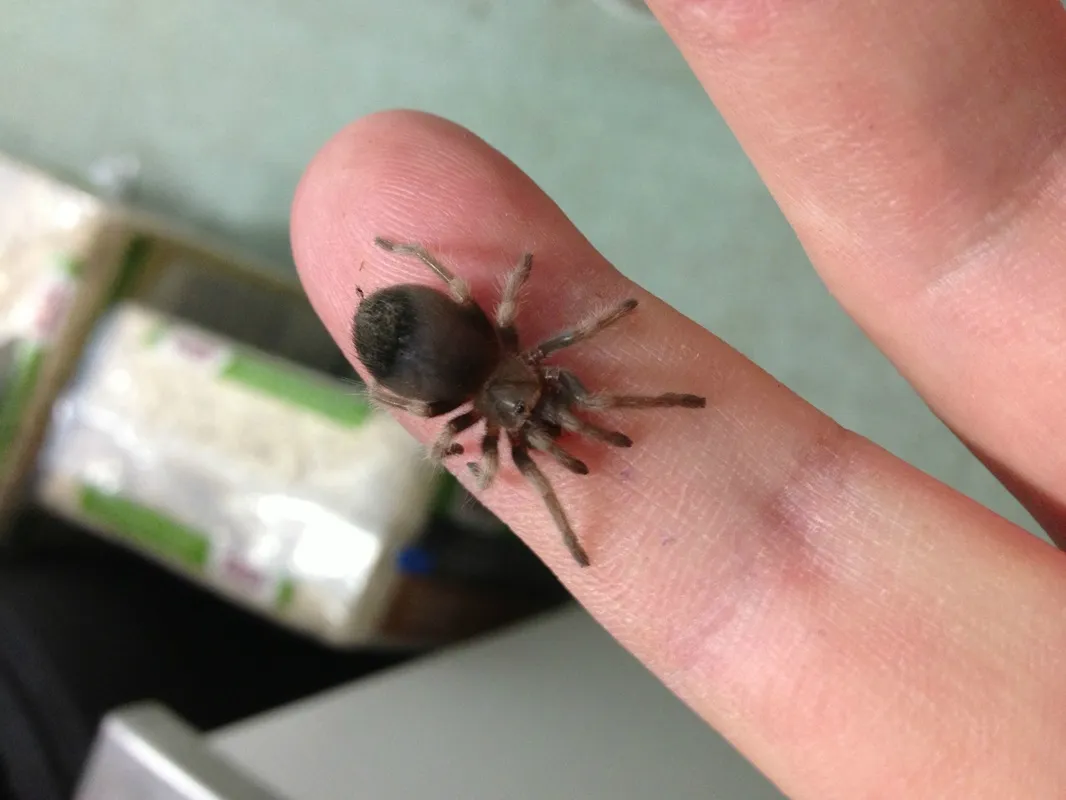
A suitable enclosure is crucial for the health of a male Mexican Red Knee Tarantula. The enclosure should be appropriately sized, with dimensions that allow for adequate movement. It should have a secure lid to prevent escapes. The substrate should consist of a mixture of coco fiber, peat moss, and vermiculite that allows for burrowing, and maintaining the proper humidity levels. Providing a hide, such as a piece of cork bark or a hollow log, will allow your tarantula to feel safe and secure. Clean the enclosure regularly and remove any uneaten food to maintain a healthy environment. Ensure the enclosure is in a location free from direct sunlight and drafts.
Feeding and Diet
Feeding a male Mexican Red Knee Tarantula is relatively straightforward. The diet should primarily consist of appropriately sized insects, such as crickets, roaches, and mealworms. The frequency of feeding depends on the age and size of the tarantula. However, juveniles should be fed more frequently than adults. Offer food every few days for juveniles and once or twice a week for adults. Remove any uneaten food after 24 hours. Always provide a shallow water dish filled with fresh water. Ensure the insects are gut-loaded before offering them to your tarantula to provide the necessary nutrients. Adjust feeding based on the tarantula’s body condition.
Conclusion
Understanding the unique characteristics of male Mexican Red Knee Tarantulas is essential for providing the best possible care. Their appearance, molting patterns, lifespan, and behavior all differ from their female counterparts. By knowing these five key facts, you can ensure your male tarantula thrives and enjoy a fulfilling life. Remember to provide appropriate habitat, maintain proper humidity, and feed a balanced diet. Appreciate the unique journey of a male Mexican Red Knee Tarantula, and enjoy the time you have together. By providing the best possible care, you can maximize your enjoyment of these fantastic arachnids.
